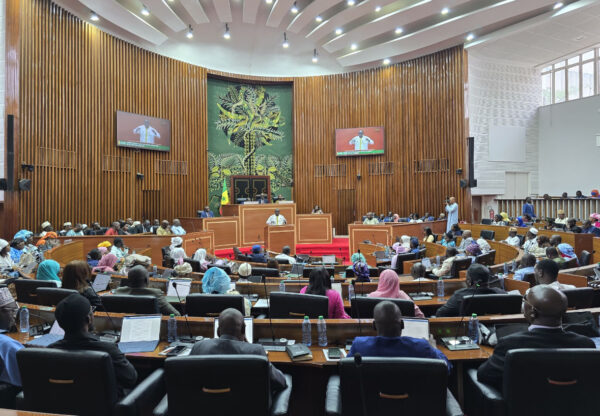The National Assembly of Senegal adopted, on Saturday, June 28, the Supplementary Budget Law (LFR) 2025, a crucial budget text that revises the country’s financial balances. Out of the 139 voting deputies, 126 voted in favor, 11 against, and 2 abstained, confirming broad parliamentary support despite an economic context marked by uncertainties and the recent publication of the audit report by the Court of Auditors.
Presented as the financial translation of the National Transformation Agenda “SENEGAL 2050”, this LFR 2025 revises downwards several macroeconomic indicators that were included in the initial budget law adopted at the end of last year.
Revised growth and increased deficit
The new forecasts confirm a relative slowdown in the expected dynamics:
– The GDP growth rate is revised to 8.0%, down from the initially projected 8.8%. Excluding hydrocarbons, growth is expected to be 3.8%.
– Nominal GDP is adjusted to 21,690.5 billion CFA francs, a 4% contraction compared to previous projections (22,597.7 billion).
As a direct consequence, the trajectory of public finances is tightening, with a budget deficit increased to 7.82% of GDP (1,695.9 billion CFA francs), compared to the anticipated 7.08% in the initial budget law. This represents an absolute deterioration of 95.5 billion CFA francs, a 6% increase.
Despite this drift, the Government has reiterated its firm commitment to gradually reduce the deficit to 3% of GDP, in line with the medium-term convergence criteria of the UEMOA.
Increased financing needs
The text also reveals an additional financing need of 1,141.7 billion CFA francs, bringing the total to over 5,715 billion CFA francs. This financing is intended to cover both current expenses and investments, as the government aims to maintain the major infrastructure projects included in the “SENEGAL 2050” program.
In detail:
– General budget revenues are revised to 4,794.6 billion, down by 2.6% (-125.7 billion) compared to initial forecasts.
– Expenditures reach 6,395.1 billion, slightly reduced by 0.5% (-30.3 billion).
The tax burden rate, a key indicator of resource mobilization, is also revised downwards to 18.9% of GDP, compared to the initially expected 19.3%.
Supporting priorities despite budget constraints
During the plenary session, the Minister of Finance and Budget, Cheikh DIBA, emphasized the realistic nature of these adjustments: “The LFR 2025 adapts to the current situation while protecting strategic priorities,” he said. The government ensures that the trajectory of public finances will remain sustainable, despite the increase in debt and cash flow tensions.
The text plans to continue implementing social programs, strengthen food security, and finance major infrastructure projects. It also acknowledges the need to strengthen budgetary control mechanisms, following the recommendations of the Court of Auditors.
Heated debates, unsurprising vote
The vote sparked heated exchanges on debt management, transparency, and budget sustainability. The opposition denounced a “worrying drift” in the deficit and a lack of anticipation in the face of economic shocks. The presidential majority, on the other hand, defended a revision deemed “necessary and responsible.”
Despite these criticisms, the broad favorable vote confirms the political support for the “SENEGAL 2050” Agenda, which the Executive intends to keep as a compass for medium-term public policies.
With this LFR 2025, Senegal is preparing to navigate a demanding budgetary period, between economic transformation ambitions and increased financing constraints.


